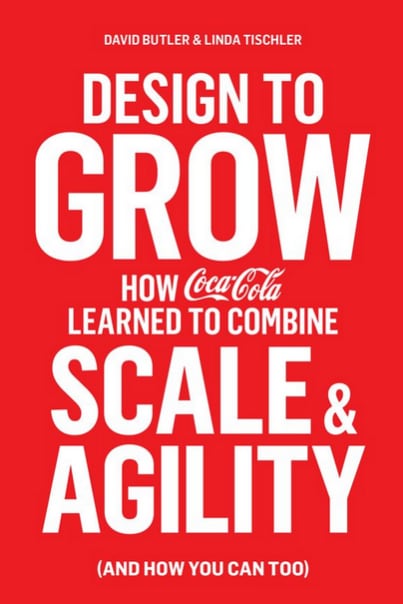David Butler, who until recently was Coke’s head of global design, says in his newly published book ‘Design to Grow: How Coca-Cola Learned to Combine Scale & Agility’, that he was inspired by Peter Senge’s book ‘The Fifth Discipline’, which discusses systems and their relationship to design.
“I became consumed with the interrelationship of things more than the design of individual pieces of the whole, as Senge would put it,” he writes in the book. "I became fascinated with many different types of systems and their effects on the world – from systemic risk (economics) to chaos theory (science).
“I wanted to know everything about how systems work – especially, big complex systems," Butler adds.
Joining Coke in 2004, Butler was charged with helping the company develop a vision, strategy and approach to ensure it was getting the most value out of design.
Billionaire brands but design approach lacked consistency
Despite owning some of the most valuable brands in the world – Coca-Cola, Sprite, Fanta, Diet Coke – he says the company did not have a consistent approach to design.
“This created many little disconnects across the way in which people experienced its brands – from packaging and communications to retail,” he writes.
“It needed to get back to the level of quality, consistency and leadership that the company’s brands were known for,” Butler adds.
In a Q&A slot on Coke’s corporate website last Thursday, he says his main target audience for the book is managers in large firms who are struggling to be more flexible, adaptable and relevant.

In 2004, to keep pace with a fast-growing global RTD beverage industry Coke needed to harness design to “remain relevant, nimble and adaptable to change”, he writes in his book.
“But it was clear that it didn’t have it yet,” he adds. “All these little disconnects were starting to make the company’s brands feel old and updated when compared with other fast-moving consumer brands like Apple and Nike.
“And a company Coca-Cola was designing at massive scale, but a lot of the things weren’t connected to each other. That made it difficult to drive the company’s growth strategy.”
The visible and the invisible...Consistent design philosophy
Yes, Coke needed to work on what was ‘visible’ – packaging, advertising, websites, trucks and coolers – Butler concedes, but it firstly needed to focus on its approach to design as a company.
In the early noughties Coke was a complex business using a design approach conceived when it was a much simpler organization, Butler writes – an organization that had had one brand (Coca-Cola) one product, one package size and (for the most part) one 5 cent/bottle price for over seven decades.
But the same approach didn’t suit a multinational business with hundreds of brands, product and packages, thousands of suppliers and millions of distribution channels.
By 2002 Coke’s business was really complicated – perhaps a factor precipitated by its 2001 decision to branch out beyond Coca-Cola and Diet Coca-Cola and become a ‘total beverage company’.
“Coca-Cola needed an approach that would help it to leverage its scale but also help create more flexibility and adaptability across its business,” Butler writes.
But he says Coke needed to “redesign the way it designed…to shift the whole company’s approach to design – everyone would have to become designers”.
'Designing on purpose' - Everyone is a designer!
“They would have to see themselves as designers and learn how the decisions they made every day were related were related and could actually help us use design to win – to help the company grow.”
A short time into his tenure at Coke, Butler says he wrote a manifesto called ‘Designing on Purpose’, to encourage design as a purposeful business strategy driven by user need and opportunity.
As glossed in his book, this manifesto has five main demands. (1) Connect everything you design to your brands (2) Clearly define visual identity systems for brands and use these to connect communication tools (3) Design management tools and principles to ensure system-wide quality.
(4) Use design to connect activation programs, licensing and promotions both locally and globally. (5) Link regional design teams with corporate to create a “design network, we could leverage our agencies, assets and knowledge much more efficiently and consistently”.
“We could and should be the company that other companies use as their standard for great design. We need to design on purpose,” Butler writes.
